INSIDE ISSUE 18.40 | OCT. 4, 2019
 BIG STORY: 2020 Census could bring budget hits to most S.C. counties, RFA reports
BIG STORY: 2020 Census could bring budget hits to most S.C. counties, RFA reports
NEWS BRIEFS: Report, new committee look at funding changes for public ed
COMMENTARY, Brack: Biden’s S.C. poll numbers here don’t tell whole story
SPOTLIGHT: Charter Communications
FEEDBACK: Thanks for explaining mess at SCETV
MYSTERY PHOTO: Interesting pattern, tough mystery
S.C. ENCYCLOPEDIA: Country music in South Carolina
BIG STORY: 2020 Census could bring budget hits to most S.C. counties, RFA reports
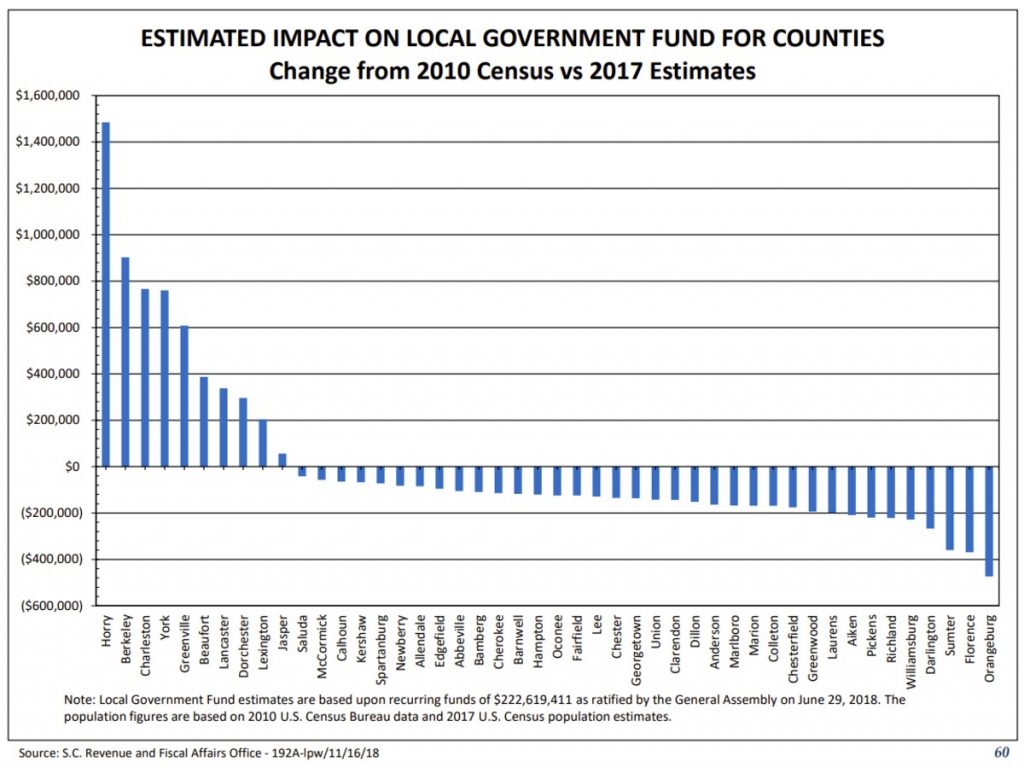
By Lindsay Street, Statehouse correspondent | Four in five counties and municipalities in South Carolina could see a revenue losses following the 2020 Census, according to an analysis by the state Revenue and Fiscal Affairs Office.
Why? Because the state divvies up money among local governments on a per capita basis instead of using a broader measure. While 10 counties and 51 cities are expected to show growth since 2010, 78 percent of counties and 81 percent of cities saw either a decrease or relatively the same population since 2010, according to 2017 U.S. Census Bureau estimates.
If projected population estimates hold true for the 2020 Census, counties — which get the largest share of state dollars to fund state-mandated services at the county level — could see cuts anywhere from $50,000 in Saluda County to more than $400,000 in Orangeburg County. Of the 10 counties that will see an increase in revenue, Jasper County could see a $50,000 increase and Horry County could see a $1.5 million increase, according to a February RFA presentation to the S.C. Association of Auditors, Treasurers and Tax Collectors. Over the summer, a second, similar presentation was made to the Municipal Association of South Carolina.
“Generally, the same areas (as in the 2010 Census that) are growing,” RFA Executive Director Frank Rainwater told Statehouse Report. “You see the urban areas growing and the rural areas not growing as fast … It’s a budget issue to be considered.”
And it could be addressed at the state level. House Ways and Means Committee Chair Murrell Smith, R-Sumter, is from one of those counties facing a decline. Estimates show Sumter County potentially losing more than $300,000.
“It is on my radar … Rural counties are struggling and the last thing we need to do is start taking away money as a result of stagnant or declining growth,” Smith said. But he added, “we have time to deal with it.”
Smith sponsored a law passed earlier this year that revamped the local government funding formula that allowed it to grow or decrease along with predicted state revenue growth.
Smith said he has been in talks with Rainwater over the impacts of potential Census changes, and he expects a legislative debate to come up before 2021 budget-writing.
How funding could impact some local governments
Think of the local government fund as a pie, Rainwater said. If all the pieces of the pie are sized in proportion to population and one slice’s population grows, then because the pie can’t get any bigger, another slice becomes smaller.
And that can cause serious concern among the state’s county and municipal leaders.
“It’s scary for some cities. There are some very small towns that don’t have a property tax and they don’t have a large revenue stream,” Municipal Association of South Carolina research and legislative liaison Melissa Harrill said.
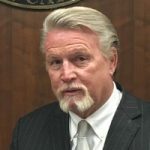
In Florence County, a loss of $300,000 in revenue is predicted for its 2021-2022 fiscal year. This fiscal year, the county’s budget stood at $61 million. Florence County Administrator K.G. Rusty Smith said the loss of money could make it even harder for the county to fulfill its “basic function” of “protecting lives and property.”
“We’ve all experienced problems in being able to keep personnel based on giving cost-of-living raises,” he said. And $300,000 may be the difference-maker in the county being able to afford higher wages, he added.
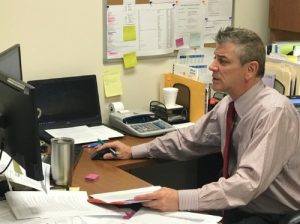
Two counties away in fast-growing Berkeley County, there is a projected increase of about $800,000 to its $91 million budget. At times over the last 10 years, Berkeley County has ranked in the top 20 counties nationally in terms of growth.
“We will see some explosive growth from 2010,” Berkeley County Finance Director Allen Milburn said. “(But) the local (government fund) itself increasing is kind of negligible to our total budget.”
He said it was still “a little premature” to tell exactly how Berkeley County will fare until after the Census is completed.
‘Being counted’
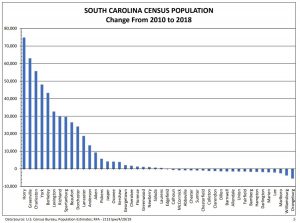 Mailboxes across the country will begin receiving Census surveys in March. Then, there will be follow-up mailings.
Mailboxes across the country will begin receiving Census surveys in March. Then, there will be follow-up mailings.
In Florence County, there was low participation in 2010, Smith said. And the county is already gearing up to push for an accurate count in 2020.
“We don’t feel like Florence County is losing population,” Smith said of the 2017 Census estimates. “We’re going to put together a ‘complete count’ committee.”
Harrill said her association is working with municipalities to drive participation.
“Now comes the next step of educating the population how important filling it out is,” Harrill said.
Rainwater said the predicted budget hits “all goes back to the importance of everyone standing up and being counted.”
- Have a comment? Send to: feedback@statehousereport.com
NEWS BRIEFS
Report, new committee look at funding changes for public ed
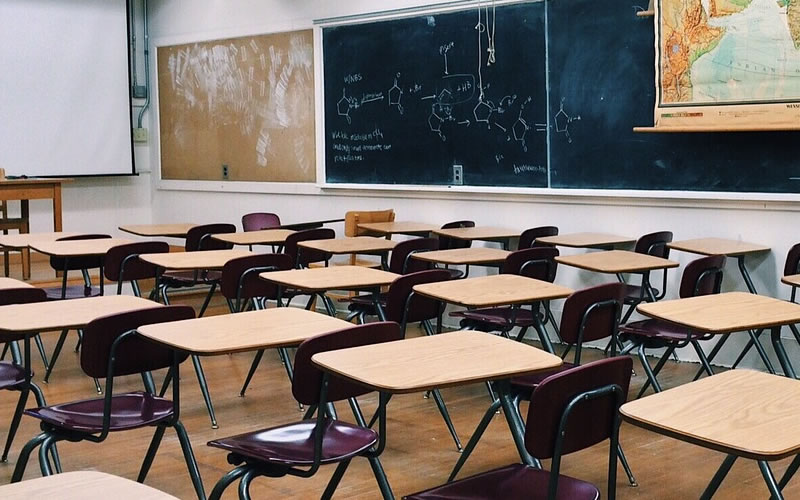
By Lindsay Street, Statehouse correspondent | Can South Carolina improve education by altering how it provides state dollars for local public education?
That’s the question that has prompted a study of education funding that was released this week as well as the creation of a new Senate special committee that will look at possible policy changes on how the state distributes money to school districts.
The S.C. Revenue and Fiscal Affairs Office released a long-awaited report Thursday that detailed how the state funds public education through myriad avenues. It’s the second report spurred by Gov. Henry McMaster, Senate President Harvey Peeler and House Speaker Jay Lucas, who asked the RFA to study the issue.
The report found 78.5 percent of spending in South Carolina classrooms goes directly to instruction in the classroom. In 2019-2020, the per-pupil cost was tabulated at $14,383, a 16 percent increase in the last four years. About $1,200 of that money comes from the federal government. The remainder is split nearly 50-50 — $6,606 from the state and $6,550 from local governments.
The report also detailed four way the state could fund districts differently:
- Adjusting for districts receiving less state funds. Option 1 would provide state support of 70 percent of the current education funding model and then would allow for the state to use the remainder to help smaller districts receive more state funds.
- Per pupil. Option 2 would modify the funding allocation by providing state funding of $3,000 per pupil to every district totaling $2,163.3 million.
- Removing costs. Option 3 would remove facilities costs and property tax relief funding from the model, which would mean school districts would fund facility costs solely from local taxes raised. Under this model, the state would foot 66.5 percent of education funding costs, which don’t include facilities expenses.
- 80 percent. Under Option 4, the state would provide funding for four-fifths of the cost of instruction and facilities. District services — basically district expenses outside classroom instruction, facilities and transportation — are funded entirely by each local district.
Earlier this week, RFA Executive Director Frank Water said the report would “try to avoid policy recommendations.”
New committee gets to work
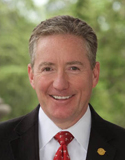
S.C. Senate Education Chairman Greg Hembree, R-Horry, launched his new committee last week to study and evaluate policy changes for funding education.
“The Fiscal Affairs Office does a great job taking a piece of policy the General Assembly might be considering or pass and quantifying what the policy would cost. That’s their role and what they are really good at,” Hembree told Statehouse Report. “(Setting policy is) a function of the General Assembly.”
Hembree said the committee will be “a couple-year project” in addressing funding education in South Carolina.
“It’s not like the formula is woefully broken. Is it in need of adjustment? Yes,” Hembree said. He said 100-plus funding lines and the spending of more than $14,400 per pupil are “not working so good.”
In other S.C. news:
![]() SCforEd convenes second caucus Oct. 5. The grassroots education advocacy group SCforEd will meet 9 a.m. to 4 p.m. Oct. 5 at the University of South Carolina in Columbia to discuss political action in the coming year. Learn more.
SCforEd convenes second caucus Oct. 5. The grassroots education advocacy group SCforEd will meet 9 a.m. to 4 p.m. Oct. 5 at the University of South Carolina in Columbia to discuss political action in the coming year. Learn more.
State energy plan to be discussed Oct. 8. The State Regulation of Public Utilities Review Committee will meet 10 a.m. Oct. 8 in room 207 of the Gressette building at the Statehouse. On the agenda: the State Energy Office’s state energy plan; discussion of Public Service Commission candidates and attendance at political gatherings; and annual reviews of the Public Service Commission and the Office of Regulatory Staff agency. Read the agenda.
Rural Women’s Summit set for Oct. 27-29 in Greenville. The summit is designed for rural leaders and advocates of women’s leadership roles and their barriers in rural America. Learn more.
S.C. GOP gets served lawsuit over no presidential primary. Former Republican congressman Bob Inglis has sued the South Carolina Republican Party over its decision not to hold a presidential preference primary in 2020 — a possibility floated to Statehouse Report by Republican presidential hopeful Mark Sanford last month.
State to look at use-of-force via task force. The Charleston City Paper looked at a state task force working out rules to guide law enforcement officers on how to employ the use of force. Read the article here.
The Greenville News released its series this week on use-of-force among South Carolina law enforcement. Click here to read that series.
Oremus heads to Columbia. Republican Melissa Oremus of Aiken has won the special election to House District 84, replacing Ronnie Young, who died earlier this year. Read more.
2020 candidate calendar
Throughout the campaign season, we are working to keep South Carolina informed of candidate events in the state. Have an event you want us to know about? Email us at 2020news@statehousereport.com.
 Blue Jamboree. Thousands are expected to attend the all-day Oct. 5 Blue Jamboree held by the Charleston County Democratic Party at The Bend, 3775 Azalea Drive, in North Charleston. Sponsors of the event include these presidential candidates: Joe Biden, Pete Buttigieg, Tulsi Gabbard, Kamala Harris, Elizabeth Warren, Tom Steyer, Cory Booker, Andrew Yang, Michael Bennet and Julian Castro. Some of them will send surrogates to stand in for them, but several will attend. Tickets are $20.
Blue Jamboree. Thousands are expected to attend the all-day Oct. 5 Blue Jamboree held by the Charleston County Democratic Party at The Bend, 3775 Azalea Drive, in North Charleston. Sponsors of the event include these presidential candidates: Joe Biden, Pete Buttigieg, Tulsi Gabbard, Kamala Harris, Elizabeth Warren, Tom Steyer, Cory Booker, Andrew Yang, Michael Bennet and Julian Castro. Some of them will send surrogates to stand in for them, but several will attend. Tickets are $20.
Steyer visits Charleston area. Businessman Tom Steyer will attend several events in the Charleston area this weekend. Among the Oct. 5 events: 10:45 a.m. walking tour with Elder Johnson in North Charleston, and a gun violence summit 6 p.m. at Mount Moriah Missionary Baptist Church in North Charleston.
Harris visits for town hall in Beaufort County. California Sen. Kamala Harris will attend a Beaufort County town hall 5 p.m. Oct. 5. Learn more here.
Bullock makes stop in Columbia. Democratic Montana Gov. Steve Bullock will meet with Carol and Don Fowler of Columbia 1 p.m. Oct. 6. To RSVP, contact Mike Mendoza at Mendoza@SteveBullock.com or 949-735-7515.
Bennet to attend Pints and Politics Oct. 6. U.S. Sen. Michael Bennet, D-Colorado, will speak at The Post and Courier’s political event noon Oct. 6 at Palmetto Brewing Co. in Charleston. Learn more.
Gabbard in Charleston Oct. 5-6. On Oct. 5, U.S. Rep. Tulsi Gabbard, D-Hawaii, will attend a conversation with the candidates 6:30 p.m. at Mount Moriah Missionary Baptist Church in North Charleston. She will return to the church 9 a.m. Oct. 6 for services. Then, she will attend The Post and Courier’s Pints and Politics 2:30 p.m. Oct. 6 at Palmetto Brewing Co. in Charleston. Learn more. Conversations with Candidates
Williamson returns to Charleston area Oct. 8. Businesswoman and author Marianne Williamson will attend The Post and Courier’s Pints and Politics 5 p.m. Oct. 8 at Palmetto Brewing Co. in Charleston. Learn more.
Warren attends Clyburn town hall Oct. 9. Massachusetts Sen. Elizabeth Warren will attend a town hall 6 p.m. Oct. 9 at the Dr. Barbara A. Vaughan Fine Arts Center Recital Hall in Orangeburg. The event is hosted by House Majority Whip Jim Clyburn of South Carolina. The event is free but RSVPs requested.
- Have a comment? Send to: feedback@statehousereport.com
BRACK: Biden’s S.C. poll numbers here don’t tell whole story
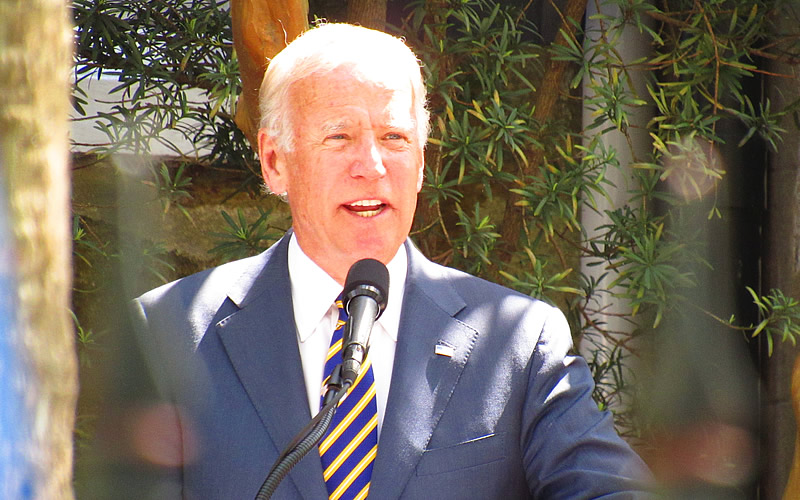
By Andy Brack, editor and publisher | Seasoned politicos are a bit taken aback by former Vice President Joe Biden’s strong numbers in a new Winthrop Poll in South Carolina, particularly among black Democratic and Democratic-leaning voters.
 The poll showed he had support among almost half of African American Democrats — a big number in a huge field of Democrats running for president. Among all Democratic registered voters and those who lean that way, the poll showed Biden was the pick of 37 percent of all South Carolina Democratic voters — more than 20 points higher than the next closest candidate, U.S. Sen. Elizabeth Warren of Massachusetts. And she was the only other candidate in double digits. Fifteen of 17 other candidates polled at less than 5 percent.
The poll showed he had support among almost half of African American Democrats — a big number in a huge field of Democrats running for president. Among all Democratic registered voters and those who lean that way, the poll showed Biden was the pick of 37 percent of all South Carolina Democratic voters — more than 20 points higher than the next closest candidate, U.S. Sen. Elizabeth Warren of Massachusetts. And she was the only other candidate in double digits. Fifteen of 17 other candidates polled at less than 5 percent.
So what’s going on in the Palmetto State with Biden, particularly since polls in other early voting states, such as Iowa and New Hampshire, show Warren neck-and-neck with the longtime frontrunner?
First, Biden is familiar to many in South Carolina. Not only has he visited many times through the years, but he has had deep relationships with everyone from U.S. House Majority Leader Jim Clyburn to the late U.S. Sens. Strom Thurmond and Fritz Hollings, both of whom had Biden as the eulogist at their funerals.
Second, he served as vice president for America’s first black president, a vitally crucial validator in South Carolina’s black community. As President Obama’s number two, Biden has almost universal name recognition and a carry-over effect here, where the minority vote makes a real difference, compared to almost lily-white Iowa and New Hampshire. In fact, black voters in South Carolina are a majority in Democratic primaries, which makes Biden’s poll numbers that much more impressive.
Third, Biden is a moderate, which tends to be more appealing in South Carolina, a much more conservative state than other early voting states. Unionization rates are the lowest in the nation here. And some of the more progressive messaging — Medicare for all, $15-per-hour minimum wage and class-based rhetoric — tends not to do as well among voters.
 But despite Biden’s popularity in the new Winthrop snapshot of voters, political waters are churning nationally with the mess involving impeachment and the inquiry of how Ukraine is involved with American politics. President Trump, a master at deflecting people’s attention, is trying to get folks to focus on whatever Biden’s son did in Ukraine, not what the Trump administration did to get a foreign government to try to interfere with the 2020 U.S. election.
But despite Biden’s popularity in the new Winthrop snapshot of voters, political waters are churning nationally with the mess involving impeachment and the inquiry of how Ukraine is involved with American politics. President Trump, a master at deflecting people’s attention, is trying to get folks to focus on whatever Biden’s son did in Ukraine, not what the Trump administration did to get a foreign government to try to interfere with the 2020 U.S. election.
So far, Biden hasn’t seemed to respond effectively to reassure voters, particularly those who like him in South Carolina.
“He could be damaged from the impeachment inquiry and the negative publicity surrounding his son’s work in Ukraine,” said College of Charleston political scientist Gibbs Knotts. “Our research indicated that African American candidates and Southern candidates were at an advantage in the South Carolina Democratic primary. [But] Biden is not African American or a Southerner.”
Biden also could face a situation similar to that encountered by Hillary Clinton in 2008 when she was running against Obama. That year, Knotts said, “she polled well in South Carolina but after Obama won the Iowa caucus many South Carolina voters, particularly African American voters, shifted allegiances from Clinton to Obama.”
Warren’s candidacy is surging elsewhere. If she continues to attract support, she could take Iowa and New Hampshire. She might lose South Carolina, but then if she does well on Super Tuesday — which is just three days after the S.C. primary — she could almost lock up the nomination. In 2020, 14 states — including all-important California for the first time — have primaries on March 3. A Sept. 25 Los Angeles Times poll showed Warren at top in California, nine points ahead of Biden.
If Biden wants to win the nomination, his campaign needs to get back on track and push what has made him successful in the past — a moderate message of building economic opportunity so that people can get good jobs and realize the American dream. If the former vice president’s campaigns continues to skirt around in the shadows as the political water torture of possible impeachment drags on, his dream of being president might just remain a dream.
Andy Brack’s latest book, “We Can Do Better, South Carolina,” is now available in paperback and for Kindle via Amazon.
- Have a comment? Send to: feedback@statehousereport.com.
Charter Communications
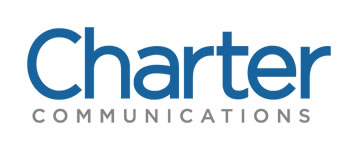 The public spiritedness of our underwriters allows us to bring Statehouse Report to you at no cost. Today, we’re happy to shine the spotlight on Charter Communications, the nation’s fastest-growing TV, internet and voice company. Committed to integrating the highest quality service with superior entertainment and communications products, Charter is at the intersection of technology and entertainment, facilitating essential communications that connect 24 million residential and business customers in 41 states, including South Carolina. In addition to being committed to giving back to the communities we serve, the bedrock of our business strategy is to serve our customers and exceed their expectations.
The public spiritedness of our underwriters allows us to bring Statehouse Report to you at no cost. Today, we’re happy to shine the spotlight on Charter Communications, the nation’s fastest-growing TV, internet and voice company. Committed to integrating the highest quality service with superior entertainment and communications products, Charter is at the intersection of technology and entertainment, facilitating essential communications that connect 24 million residential and business customers in 41 states, including South Carolina. In addition to being committed to giving back to the communities we serve, the bedrock of our business strategy is to serve our customers and exceed their expectations.
“We, at our core, are a service organization,” President and CEO Tom Rutledge says. “And every product we sell has a huge service component.”
- To learn more, visit Charter’s South Carolina services online.
Thanks for explaining mess at SCETV
To the editor:
![]() Thanks for your informative article on the ETV Board trying to hoodwink the Endowment. I knew nothing about that situation, but I have been an Endowment supporter for decades and would not want the Foundation to be compromised by political sharks.
Thanks for your informative article on the ETV Board trying to hoodwink the Endowment. I knew nothing about that situation, but I have been an Endowment supporter for decades and would not want the Foundation to be compromised by political sharks.
— Mary Bostick, Columbia, S.C.
To the editor:
BULLS EYE! Thank you for making this understandable to the supporters of SCETV. We needed and appreciate your clarity.
— Charles Smith, Charleston, S.C.
Differing reactions to same story about children in high poverty
To the editor:
RE: 130,000 children living in high poverty in S.C.
First of all get rid of liberal teachers who brainwash the children with their political views. There should be an American Flag in every classroom and the Pledge of Allegiance recited. Before class begins. Curriculum should include English language, American History. Geography, Math, Business skills, running a business, and last but not least, teach students that America is the greatest Country on the face of the Planet!
— Josephine Mauro, Bluffton, S.C.
To the editor:
Another fine piece of reporting by Ms. Street consistently delivered. Now that is talent.
— Fred Palm, Edisto Island, S.C.
Send us your thoughts … or rants
We love hearing from our readers and encourage you to share your opinions. But you’ve got to provide us with contact information so we can verify your letters. Letters to the editor are published weekly. We reserve the right to edit for length and clarity. Comments are limited to 250 words or less. Please include your name and contact information.
- Send your letters or comments to: feedback@statehousereport.com
Interesting pattern, tough mystery

Here’s an odd-looking pattern seen at a building somewhere in South Carolina. This will be a hard mystery. Where is it and what is it? Send your guess about the location of this photo to feedback@statehousereport.com. And don’t forget to include your name and the town in which you live.
Our previous Mystery Photo
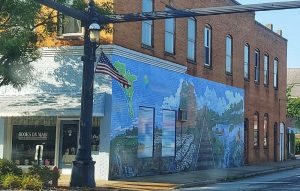 Our Sept. 27 mystery, “Downtown scene,” showed a mural in downtown McCormick, S.C., which several readers identified. Some said the mural was a little tricky because we blurred a clue. But we left one in there!
Our Sept. 27 mystery, “Downtown scene,” showed a mural in downtown McCormick, S.C., which several readers identified. Some said the mural was a little tricky because we blurred a clue. But we left one in there!
Congratulations to Tray Hunter of Bluffton; Holley Ulbrich of Clemson; David Taylor of Darlington; Charlie Davis of Aiken; Will McAbee and Jay Altman, both of Columbia; George Graf of Palmyra, Va.; Frank Bouknight of Summerville; Frank Wideman III of Greenwood; David Lupo of Mount Pleasant; and Greg Levitis of Berkeley, Calif.
Graf noted that there’s always more to the story of Statehouse Report’s mystery photos. (Yes, a picture is worth more than 1,000 words!). He shared some extra sleuthing about the painting:
“The mural was done by local McCormick artist, Jeffery Callaham, who has an art studio in nearby Plum Branch and attended Bauder College in Atlanta, Ga. He said the mural work is untitled and it was funded by a state grant.
“The town wanted a work that embodied a railroad theme, since McCormick was a railroad stop town, though the Modoc Native American tribe put up a fierce resistance to the train invasion of the area and delayed McCormick’s rail stop. Jeffery said the trains still run through McCormick, but they are now freight versus passenger trains.
“I talked to the McCormick Library director, Paul Brown who said that Jeffery was very active in the community providing artwork and art classes for adults and children. After the mural on the Books on Main building was completed, Jeffery conducted an art class for kids at the library.
“The building mural depicts images of animals and people, so Jeffery gave a project to the kids to make up a story about things in the mural and they would make a graphic novel about it. After the project was finished, Jeffery painted four panels to go with the novel. Next week they will be mounted on the McCormick library’s walls for viewing with information about the kids’ stories.
“Paul said that Jeffery’s artwork is so well liked, that he was commissioned to do another building mural in Plum Branch and it is currently half finished. The local communities are looking at doing more of these murals to cover the walls of older buildings in the area. The director of the McCormick Arts Council of Katurah (MACK), where Jeffery also works, said that his murals are in the primitive style and very well-liked by the community.”
- Send us a mystery: If you have a photo that you believe will stump readers, send it along (but make sure to tell us what it is because it may stump us too!) Send to: feedback@statehousereport.com and mark it as a photo submission. Thanks.
S.C. ENCYCLOPEDIA
Charleston’s Darius Rucker was the Country Music Association’s New Artist of the Year in 2009. In addition to his albums with the rock and roll band Hootie and the Blowfish, he’s recorded five solo country albums.
HISTORY: Country music in South Carolina

S.C. Encyclopedia | “Country” is the contemporary term for the music of common white folks of the rural South. It evolved over the years from elements of old Protestant hymns, traditional ballads of English and Scottish origins, dance music, African American musical traditions, and material of such composed traditions as designed for the minstrel stage and early-day “Tin-Pan-Alley.” Country music as known in modern America began to develop in the early and mid-1920s when it first began to appear on radio stations and phonograph recordings.
In addition to rural residents generally, the music seems to have been especially popular among textile workers in the cotton-mill villages. Country song lyrics, with their varying degrees of sadness and sentimentality, touches of rowdiness, reverence, and occasional self-deprecating humor have a way of expressing the thoughts and feelings of ordinary folk in a manner that, while unappealing to the more sophisticated, reaches their souls when other cultural forms do not. Through the years the music has become more complex, more commercial, and more electric, while still managing to retain much of its original character.
Early practitioners of country music in South Carolina included the Bouchillon Trio and Chris Bouchillon, the latter of whom drew much of his music from minstrel traditions and made several recordings for Columbia, most notably “The Talking Blues” in 1926. Early country music featured numerous string bands comprised of fiddle music with rhythm background furnished by guitar, banjo, and sometimes mandolin. Pioneer artists in this field included the Aiken County String Band, who in 1927 cut such tunes as “Carolina Stompdown” and “Harrisburg Itch” for the Okeh label.
The duo of Charlie Parker and Mack Woolbright from Union made six sides for Columbia in 1927 that included such sentimental songs as “Grandmother’s Old Arm Chair” and the humorous “The Man That Wrote Home Sweet Home Never Was a Married Man.” South Carolina–born steel guitarist Jimmie Tarlton, while living in Columbus, Georgia, recorded many numbers for Columbia beginning in 1927 as half of the duet act of Darby and Tarlton, including the earliest known versions of “Birmingham Jail” and “Columbus Stockade Blues.”
While musicians continued to record during the Great Depression, radio programs probably played a more significant role in the dissemination of country-music sounds. Stations of note that broadcast country radio programs in South Carolina included WIS Columbia, WFBC Greenville, and WSPA Spartanburg. Influential stations in neighboring states that had numerous South Carolinians in their listening audience included WBT Charlotte, WPTF Raleigh, WSB Atlanta, and on Saturday nights WSM in Nashville.
Among the notable groups heard on these stations were Mainer’s Mountaineers, the Dixon Brothers, the Monroe Brothers, Fisher Hendley, Cliff Carlisle, the Blue Sky Boys, Claude Casey’s Pine State Playboys, the Briarhoppers, and Byron Parker’s Mountaineers (later known as the WIS Hillbillies and finally as the Hired Hands), who made WIS their permanent base after 1937. The banjo-picking comic DeWitt “Snuffy” Jenkins and the fiddler Homer “Pappy” Sherill dominated this group musically. In 1938 the American Record Corporation held recording sessions in Columbia, and in 1938 and 1939 Blue Records conducted similar sessions in Rock Hill, possibly because of disputes with the musicians’ union in Charlotte.
In the past half-century country music has continued to be popular in South Carolina, although the state has contributed few performers who have attained national fame. Arthur “Guitar Boogie” Smith of Kershaw County eventually became the dominant figure on the Charlotte scene. One of the major stars of the 1960s, Bill Anderson, spent his early years in the Palmetto State, and two of the more significant figures in bluegrass music, the late vocalist Charlie Moore and the influential banjo picker Don Reno, hailed from the South Carolina Piedmont.
The late Carl Story, known as the father of bluegrass gospel music, spent the last quarter-century of his life in Greer, where he did disc-jockey work when not on the road. The gospel pianist and Greenville native Hovie Lister led the Atlanta-based Statesmen Quartet for more than a half-century. Southern gospel groups such as the contemporary Palmetto State Quartet still play a significant role on the sacred-music scene.
Although South Carolina may not have produced as many country stars as neighboring states have, country fans are abundant and many radio stations have adopted country formats. Furthermore, the Myrtle Beach area, as one of the South’s major tourist attractions, has increasingly had its share of country music venues. With such theaters and programs as the “Carolina Opry,” the Grand Strand is rapidly gaining a name as “Branson East.”
— Excerpted from an entry by Abby Gail Goodnight and Ivan M. Tribe. This entry may not have been updated since 2006. To read more about this or 2,000 other entries about South Carolina, check out The South Carolina Encyclopedia, published in 2006 by USC Press. (Information used by permission.)
ABOUT STATEHOUSE REPORT
Statehouse Report, founded in 2001 as a weekly legislative forecast that informs readers about what is going to happen in South Carolina politics and policy, is provided to you at no charge every Friday.
Meet our team
- Editor and publisher: Andy Brack, 843.670.3996
- Statehouse correspondent: Lindsay Street
Buy the book
Now you can get a copy of editor and publisher Andy Brack’s We Can Do Better, South Carolina! ($14.99) as a paperback or as a Kindle book ($7.99). . The book of essays offers incisive commentaries by editor and publisher Andy Brack on the American South, the common good, vexing problems for the Palmetto State and interesting South Carolina leaders.
More
- Mailing address: Send inquiries by mail to: P.O. Box 22261, Charleston, SC 29407
- Subscriptions are free: Click to subscribe.
- We hope you’ll keep receiving the great news and information from Statehouse Report, but if you need to unsubscribe, go to the bottom of the weekly email issue and follow the instructions.
- © 2019, Statehouse Report. All rights reserved.


